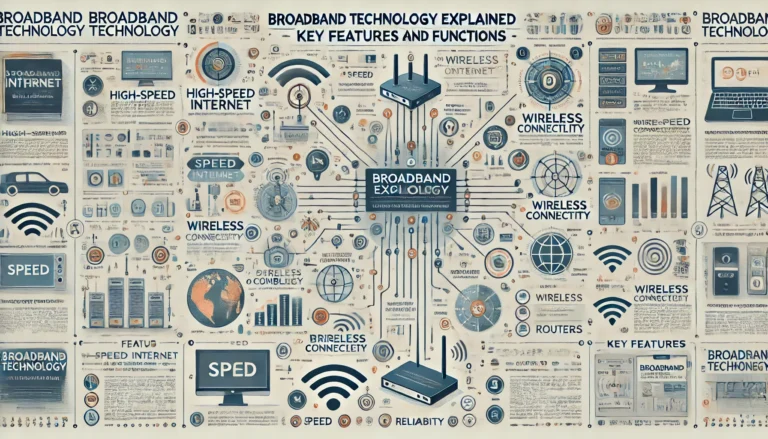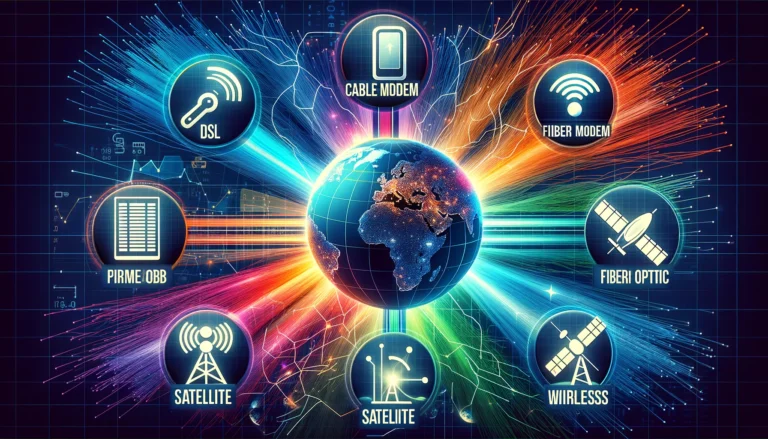Leap into the Future: Transitioning from Dial-Up to DSL Broadband Technology
In an age where the internet has become an integral part of daily life, remaining tethered to outdated dial-up connections can feel like being stuck in the digital Stone Age. Upgrading from dial-up to Digital Subscriber Line (DSL) broadband technology marks a significant leap forward, offering a gateway to enhanced speed, reliability, and efficiency in internet access. This guide serves as a comprehensive resource for those contemplating this crucial upgrade, shedding light on what you need to know to make a smooth transition into the high-speed world of DSL broadband.

Understanding the DSL Broadband Leap
DSL technology represents a significant advancement over traditional dial-up connections, utilizing existing telephone lines to deliver high-speed internet access without disrupting telephone use. Unlike dial-up, which monopolizes the phone line, DSL allows for simultaneous internet and telephone usage, marking an end to the frustrating days of choosing between browsing the web and making calls.
The Advantages of Upgrading to DSL
- Speed: DSL offers dramatically faster speeds compared to dial-up, enhancing everything from web browsing to streaming and downloading.
- Always-On Connection: DSL provides a constant internet connection, eliminating the need for dialing in and the accompanying wait times.
- Improved Reliability: DSL connections are more stable and less prone to disconnections than dial-up.
- Cost-Effectiveness: While DSL is generally more expensive than dial-up, the benefits of higher speeds and better reliability often justify the cost.
Preparing for the DSL Transition
Before making the switch, there are several key considerations to ensure a smooth transition:
- Check DSL Availability: Confirm that DSL broadband technology is available in your area, as geographic limitations can affect access.
- Choose the Right Service Package: Assess your internet needs and select a DSL package that matches your speed requirements and budget.
- Understand the Installation Process: DSL installation can vary from a simple self-installation kit to professional setup, depending on your provider and package.
- Equipment Upgrade: Upgrading to DSL may require a DSL modem, and in some cases, additional filters to ensure optimal performance.
The Installation Process
The process of setting up DSL broadband can involve several steps, including the installation of a DSL modem and filters to separate the data and voice signals on your telephone line. Some providers offer professional installation, which can be especially helpful for those less confident in their technical abilities.
Optimizing Your DSL Experience
Once your DSL connection is up and running, there are several ways to optimize your setup for the best possible performance:
- Wired Connections: For the most stable and fastest speeds, consider using a wired connection (Ethernet) for devices that require high bandwidth.
- Wi-Fi Optimization: If you’re using Wi-Fi, ensure your router is in an optimal location, free from obstructions and interference sources.
- Regular Modem and Router Updates: Keep your modem and router firmware up to date to maintain security and performance.
Common Concerns with DSL Upgrades
While upgrading to DSL is generally beneficial, it’s not without potential challenges. Distance from the ISP’s central office can affect speed and quality, and older home wiring may need an upgrade to support optimal DSL performance.
Embracing the Future with DSL Broadband
Upgrading from dial-up to DSL broadband technology is more than just a boost in internet speed; it’s a step into the modern digital era. With the enhanced capabilities of DSL, users can fully engage in the vast array of online opportunities available today, from streaming high-definition content to participating in real-time online gaming and much more.
In conclusion, transitioning from dial-up to DSL broadband marks a pivotal upgrade in your internet experience, offering a blend of speed, reliability, and convenience that dial-up simply cannot match. By understanding the basics of DSL technology, preparing adequately for the upgrade, and optimizing your new connection, you can unlock a new realm of digital possibilities and bid farewell to the limitations of dial-up for good.




